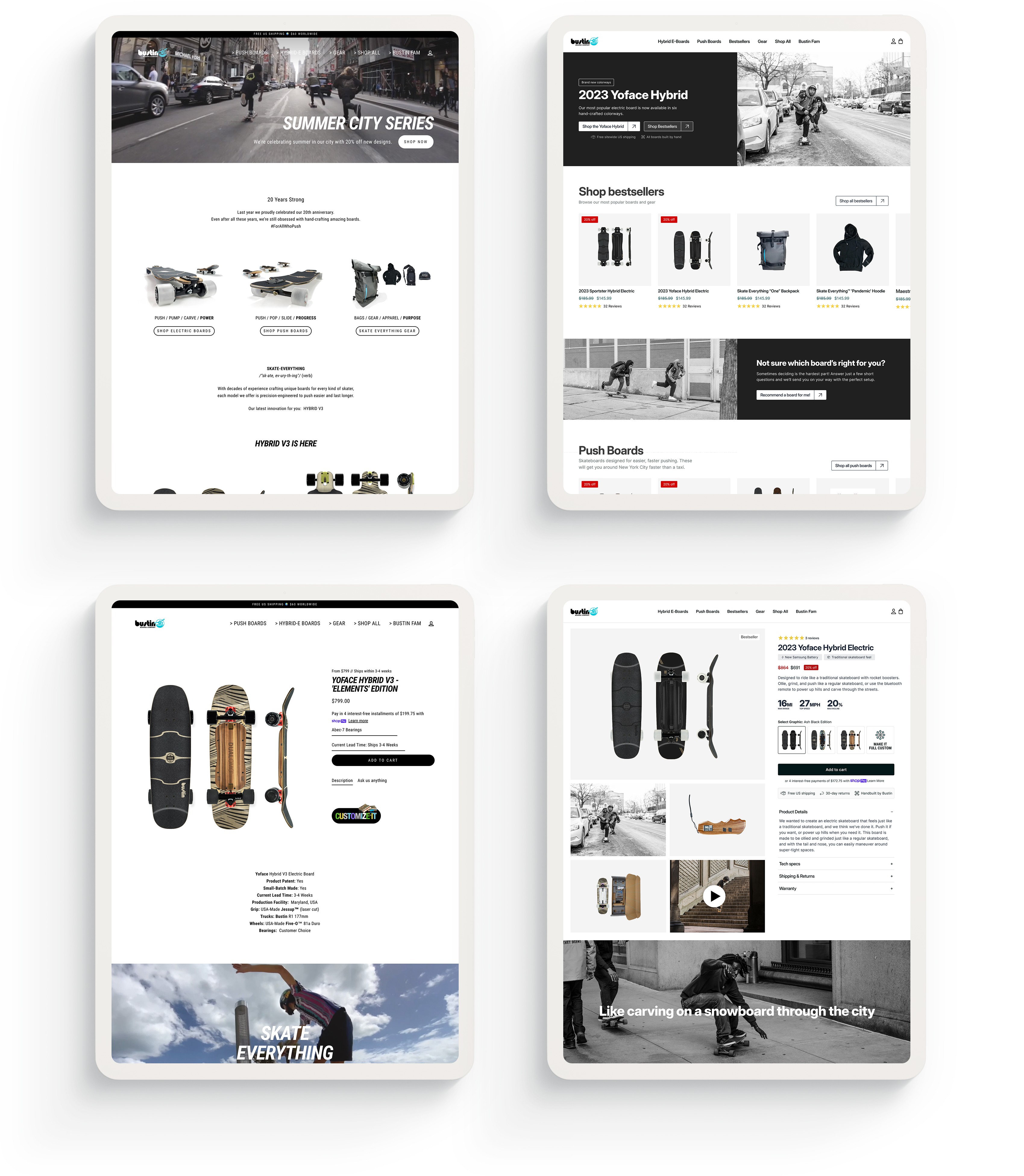ROLE
Senior Growth Designer
Platform
Responsive web
Link
Overview
Information architecture
Non-standard design patterns
For example, rather than using a prototypical hamburger menu, Bustin's mobile menu was a full-width CTA pinned to the bottom of the screen. Additionally, PDPs used dropdown menus rather than segmented buttons for variant selectors with just 3-4 options.
Visual design
The site had a number of visual design issues encompassing alignment, visual hierarchy, typography, and more. As one example, the site used a condensed font for body copy throughout its entirety, impairing readability.
Page size
Bustin's website was heavily peppered with auto-playing skate videos. On one hand, this was apt: skaters love watching skate videos. On the other hand, many of these videos exceeded 100MB in size!
Research was scrappy but targeted, and included heuristic analysis via Baymard Institute, voice-of-customer email surveys, GA/Shopify analytics analysis to identify underperforming pages, and founder/CS conversations to surface buried value propositions and commonly asked questions.
Before and after images below:

Outcome
A ~10% increase in visitors who made it to PDPs, likely the result of simplifying the site architecture and removing unnecessary intermediary landing pages
An ~18% increase in add to cart rate
A ~7% increase in checkout completion rate

